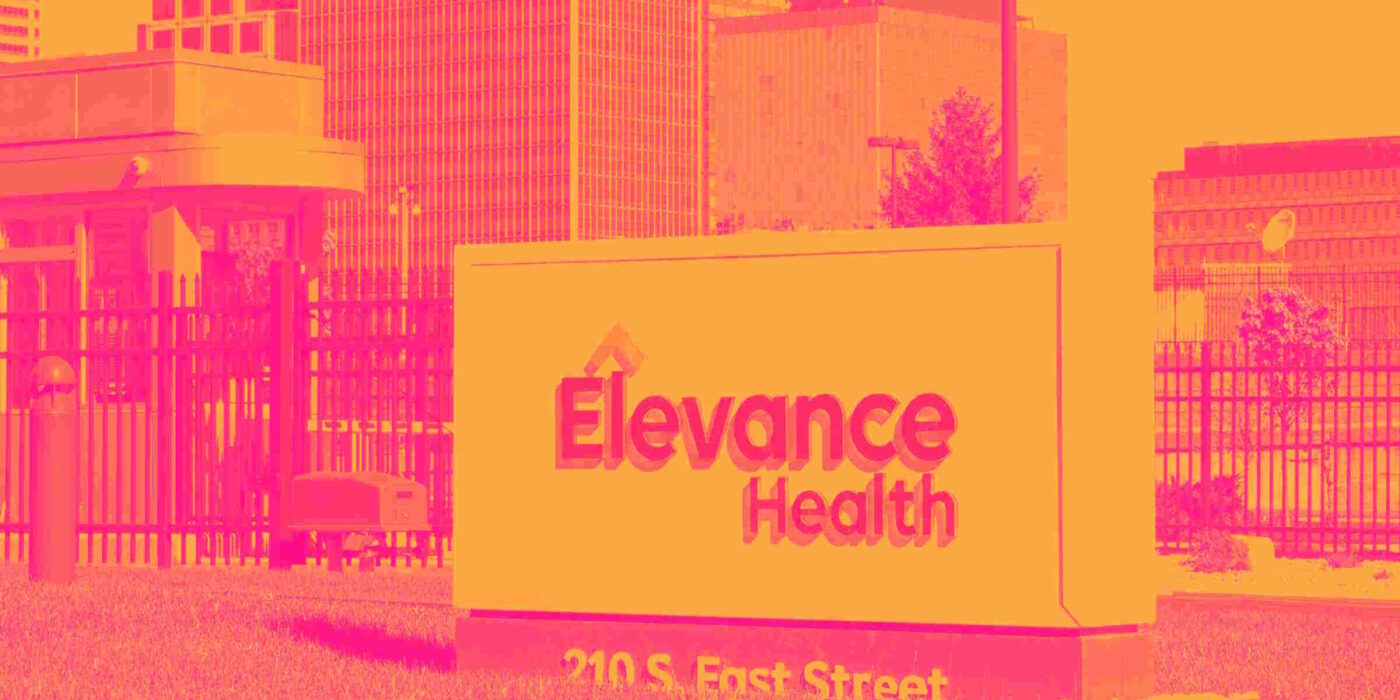
Elevance Health’s first quarter was characterized by notable revenue growth and a positive market reaction, driven by strong momentum across its Carelon services platform and ongoing investments in patient advocacy and digital integration. Management cited robust traction for Carelon’s external payer solutions and highlighted the expansion of digital initiatives like HealthOS, which now serves over 88,000 care providers. CEO Gail Boudreaux noted, “Our patient advocacy solutions supported over 6 million members...with a 95% satisfaction rate, it’s become a valuable differentiator.” The quarter also saw progress in integrating recent acquisitions to strengthen home-based and pharmacy services, though higher Medicaid costs and elevated utilization slightly tempered operating margins.
Is now the time to buy ELV? Find out in our full research report (it’s free).
Elevance Health (ELV) Q1 CY2025 Highlights:
- Revenue: $48.89 billion vs analyst estimates of $46.43 billion (14.8% year-on-year growth, 5.3% beat)
- Adjusted EPS: $11.97 vs analyst estimates of $11.48 (4.3% beat)
- Adjusted EBITDA: $4.06 billion vs analyst estimates of $3.8 billion (8.3% margin, 7% beat)
- Management reiterated its full-year Adjusted EPS guidance of $34.50 at the midpoint
- Operating Margin: 6.4%, down from 8.2% in the same quarter last year
- Customers: 45.83 million, up from 45.73 million in the previous quarter
- Market Capitalization: $85.07 billion
While we enjoy listening to the management's commentary, our favorite part of earnings calls are the analyst questions. Those are unscripted and can often highlight topics that management teams would rather avoid or topics where the answer is complicated. Here is what has caught our attention.
Our Top 5 Analyst Questions Elevance Health’s Q1 Earnings Call
- A.J. Rice (UBS) asked about persistent cost trends in Medicare Advantage and the impact of the Inflation Reduction Act. CFO Mark Kaye explained that elevated costs were anticipated and manageable, with close monitoring of claims data and no material deviations from expectations.
- Lance Wilkes (Bernstein) focused on Carelon’s external growth and specialty pharmacy integration. President Pete Haytaian highlighted strong internal and external demand, especially in risk-based services, and described ongoing integration of specialty pharmacy assets as deliberate and patient-centric.
- Stephen Baxter (Wells Fargo) inquired about lower-than-expected ACA effectuation rates and their implications for profitability. Kaye responded that lighter effectuation was due to passive Medicaid transitions and projected a single-digit percent attrition in Q2, which has been factored into guidance.
- Andrew Mok (Barclays) sought clarification on the benefit-expense ratio (MLR) outperformance. Kaye attributed this to a larger-than-expected Medicaid premium tax, which favorably impacted the ratio without affecting overall earnings.
- Lisa Gill (JPMorgan) questioned the impact of Medicare Part D changes and risk coding for new members. Kaye detailed the seasonality effects caused by the new $2,000 out-of-pocket cap and explained how these changes front-load earnings but do not alter full-year margin expectations.
Catalysts in Upcoming Quarters
Looking ahead, the StockStory team will be watching (1) the ability of Carelon to sustain external payer growth and successfully integrate recent acquisitions, (2) the outcomes of ongoing Medicaid rate negotiations and their effect on segment margins, and (3) the impact of Medicare Advantage risk adjustment changes and value-based care expansion on overall profitability. Execution in digital health platforms and pharmacy services will also be closely monitored.
Elevance Health currently trades at $376.53, down from $407.03 just before the earnings. In the wake of this quarter, is it a buy or sell? Find out in our full research report (it’s free).
Our Favorite Stocks Right Now
The market surged in 2024 and reached record highs after Donald Trump’s presidential victory in November, but questions about new economic policies are adding much uncertainty for 2025.
While the crowd speculates what might happen next, we’re homing in on the companies that can succeed regardless of the political or macroeconomic environment. Put yourself in the driver’s seat and build a durable portfolio by checking out our Top 9 Market-Beating Stocks. This is a curated list of our High Quality stocks that have generated a market-beating return of 183% over the last five years (as of March 31st 2025).
Stocks that made our list in 2020 include now familiar names such as Nvidia (+1,545% between March 2020 and March 2025) as well as under-the-radar businesses like the once-small-cap company Comfort Systems (+782% five-year return). Find your next big winner with StockStory today.
